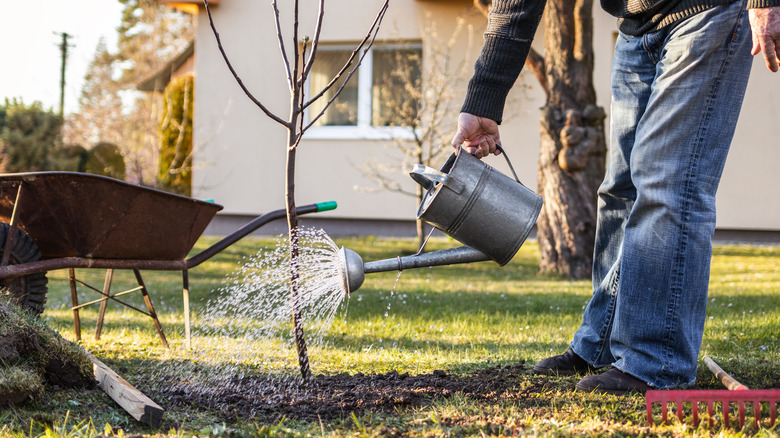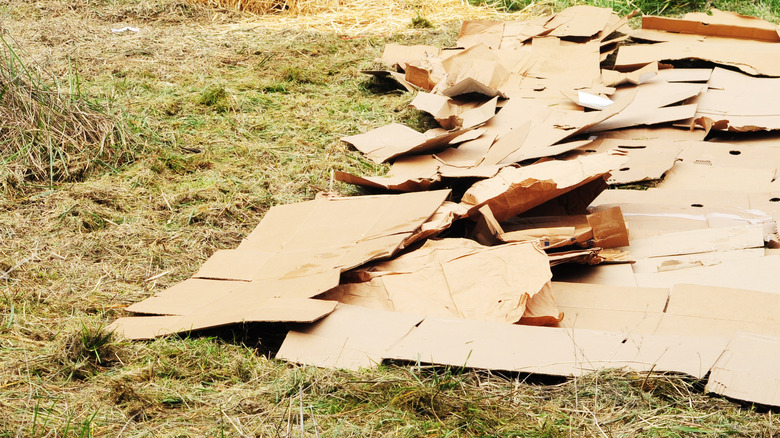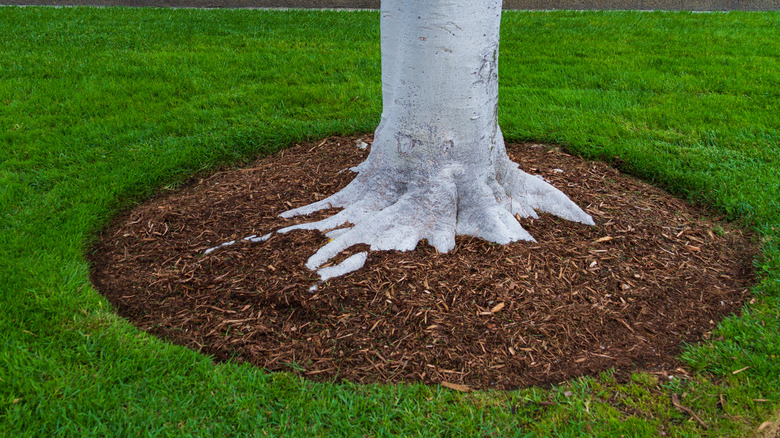There are several stages in the early years of a tree’s life, which is when it’s most vulnerable. It grows from a tiny spout to a seedling, and with luck, it moves on to becoming a sapling when it reaches 3 feet tall. It’s still susceptible to pests and disease but is becoming sturdier. This stage can last from a few years to up to two decades, depending on the type of tree. Maturity is defined by the point at which they start producing flowers or fruits. Since trees need the most resources during the sapling stage, do not neglect to remove grass and weeds from the surrounding area. Doing so ensures your young tree is not competing for water and nutrients, stunting its growth.
Most mature trees do not need special treatment. Once they reach this point, their root systems are so extensive — deep and wide — that it is the plants around the trees that are on the losing side of the competition for nutrients and water. Large trees also provide shade, which makes the space uninhabitable for many types of grass and weeds. There are, as always, exceptions to this rule. Fruit trees like apples and pears will produce more fruits if they are fertilized and have no competition in the soil environment, so continue to keep their areas clear of weeds and grass.
Knowing when to plant trees

After trees are planted, there is a period of shock. To reduce the impact of the trauma of transplanting, the best time to plant is after the trees have gone dormant but the ground is not frozen. In most regions, November is ideal, but if you live in an area where the ground does not freeze for the winter, you can plant dormant saplings through December. During this time, their roots will slowly spread and grow without having to simultaneously support new growth on the tree. By the time spring rolls around and the buds break open, the sapling is established and ready to provide nutrients to support new growth.
Soil also tends to retain more moisture in the winter, so you should not have to worry about watering it to keep the tree’s roots healthy. However, if you are experiencing a particularly warm, dry winter, water the tree deeply as needed when the soil is dry 1 inch below the surface. Always water well immediately after planting a new tree.
Remove grass and weeds

After planting your new tree, you’ll need to remove all grass and weeds at least as far out as the canopy of the tree, which is defined by the distance of the longest branch from the trunk. If the tree is still very small with few branches, clearing the area about 3 feet from the trunk is sufficient. The general rule for young trees is that the root system extends about the same distance from the trunk as the canopy. We use this as the guideline to keep those roots from competing with other greenery.
Now that you have established the area that needs to be cleared around your sapling, there are a few options. Pulling weeds and grass by hand is an option, although it can be tedious. Using a shovel or spading fork to loosen the soil will speed up this process. You can also cover the area with a thick layer of cardboard or paper secured with rocks to smother the greenery and improve the soil structure. Worms love paper and will work their way to the surface to consume those decomposing materials, aerating the soil and leaving their castings. Keep this layer of paper a few inches away from the trunk of the tree to prevent moisture buildup, which will lead to rot.
Apply mulch

Sanfel/Getty Images
Layers of cardboard or paper are not exactly pretty, and bare ground in the winter is not good for the soil environment. Create a beautiful and functional area around your sapling by adding 2 to 4 inches of wood mulch. This will help keep your paper products in place while they smother weeds. If you are removing greenery by hand, a thick layer of mulch will help prevent future weeds.
A common mistake people make when mulching around trees is what we call the “mulch volcano.” This occurs when the mulch is piled up against the tree, and it can lead to detrimental results. Wood mulch retains moisture, which can cause the outer layers of the tree trunk to rot. When caught too late, this will kill a sapling. Rodents can also burrow through that layer of mulch and damage the tree in a hidden area. Again, once the tree starts showing signs of distress and you discover the culprit, it may be too late to save it. Avoid the mulch volcano by pulling the mulch back from the base of the tree, ensuring it is at ground level.




